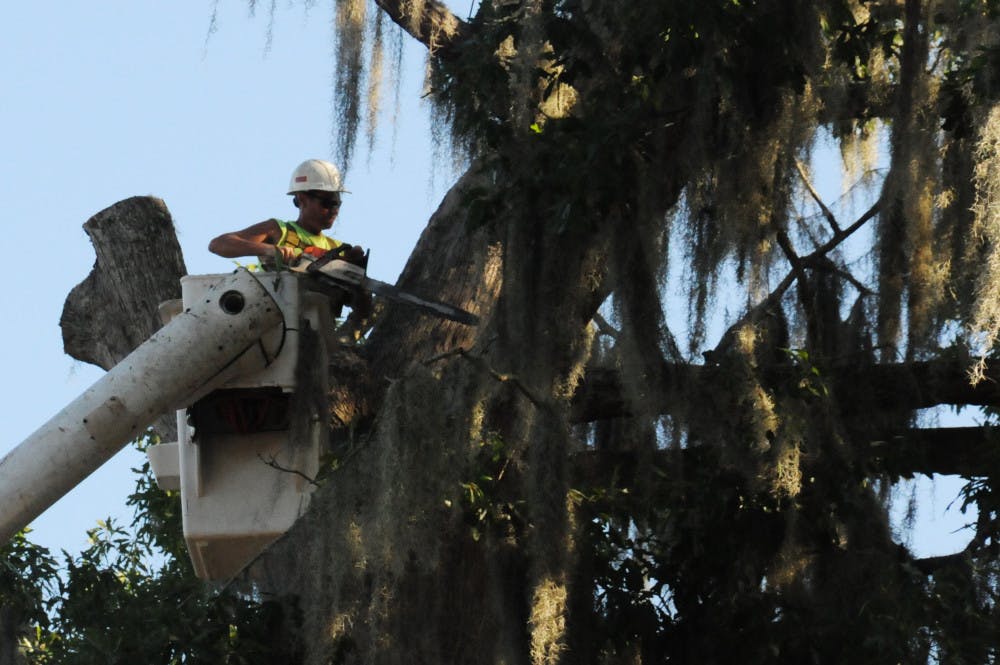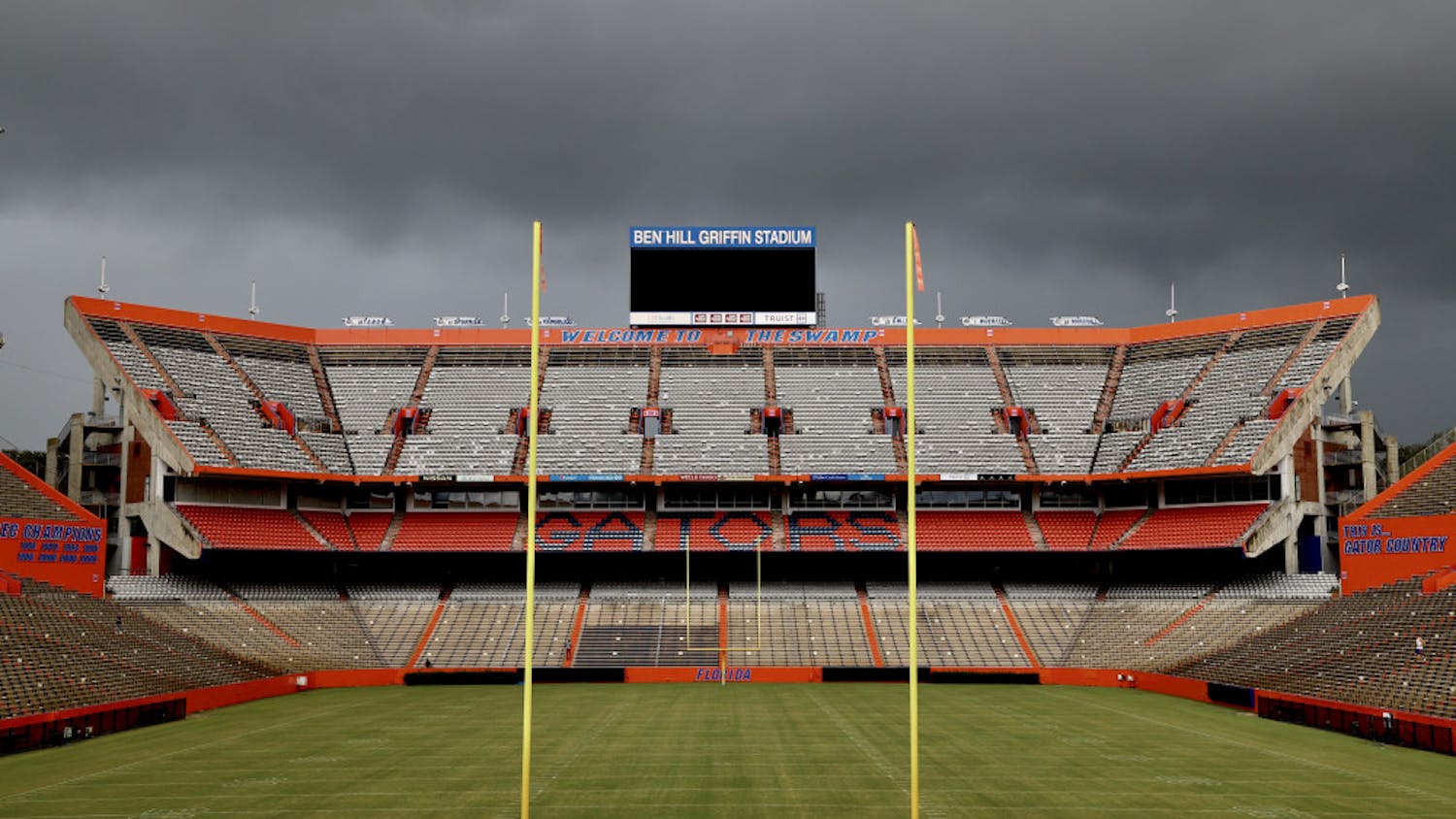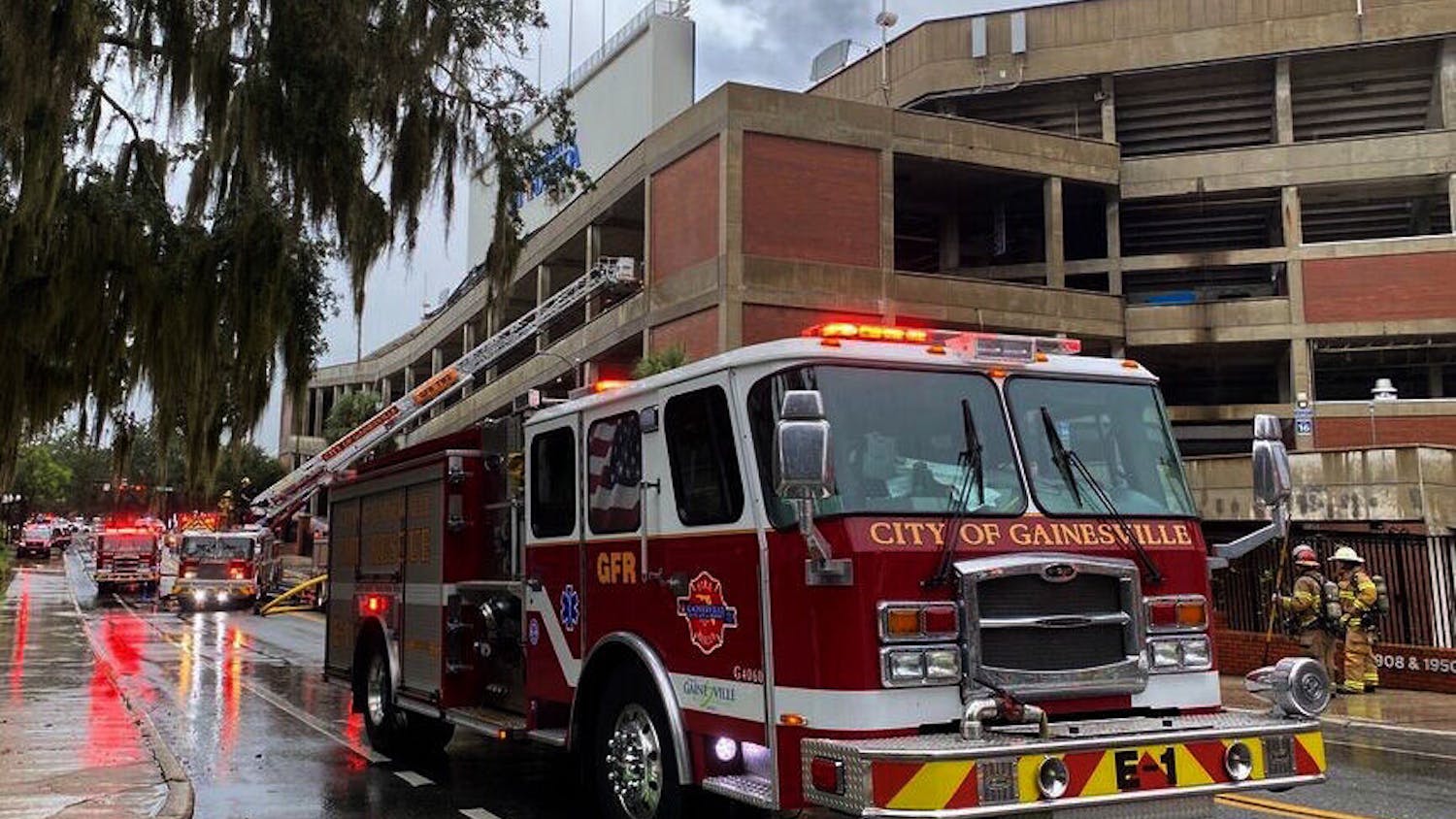Bert was too tall to be cut down in one swift motion.
The 81-foot oak tree had to be trimmed limb by limb Saturday morning as students and Gainesville residents watched.
His fall came after months of work by the community to keep the oak on UF’s campus. They tried to save Bert, the third largest Bluff Oak in Florida.
Gainesville residents took to the streets and social media to express their concerns for Bert and the other trees removed to make room for the College of Engineering’s Nexus building, an addition to the Nuclear Sciences Building located just north of the Reitz Union.
Students and UF alumni tweeted to @SaveOurBert, a twitter account run on behalf of the giant tree.
Van Truong, one of the students who ran the account, live tweeted the tree’s destruction.
In Bert’s final hours, she said she kept her expectations of his fate realistic.
“I didn't think that any more influence from us could turn the tide on the decision,” Truong said. “But there was also a hope that maybe, perhaps last-minute, it was still possible.”
But before 9 a.m., the chainsaw began to roar.
“I’m on a weight loss program,” Truong tweeted jokingly from @SaveOurBert as workers removed the tree’s branches.
Jason Smith, a UF forest pathology professor, had advocated for more than two years to save Bert since the addition plan was first announced.
“For me, there is an emotional connect,” he said. “Trees are very important to me, very, very important, and I do feel like seeing it gone was just a sad moment. At this point you’re just thinking ‘OK what can we do to save other trees?’”
He said he hopes to receive a cross section from the base of Bert, which would allow him to count the number of rings within the stem and determine the tree’s exact age. Based upon a core sample from Bert in April, the School of Forest Resources and Conservation estimated Bert was about 150 years old, Smith said.
But it was a conservative guess, Smith said, because the sample couldn’t reach three-and-a-half inches of the inner stem due to its thickness. Smith said a more accurate age estimate could be made if he had a cross section of Bert’s trunk.
Smith said the project manager is willing to give Smith the cross section, but UF administration has to approve it first.
“It’s very possible that center part could be much, much older than we think,” Smith said.
Based upon his observation of the tree on Saturday, Smith said that Bert appeared to be strong and healthy and could have lived for at least another 100 years had the tree been left alone.
Bert was in the way of UF’s Nexus building, which UF spokesman Steve Orlando said the university hopes will keep engineering students interested in the field with new features such as research lab space.
The selected design was one of many created by the the design team. The team tried to save the trees but ultimately decided on the plan that cut the most heritage trees down, according to the minutes from the May 14 UF Lakes, Vegetation and Landscape Committee.
The plan chosen, although it cuts down the most heritage trees, works best with the program, the Master Plan boundaries and proximity to the Reitz Union, project manager Cydney McGlothlin said at the meeting.
The purpose of the building, Orlando said, is to keep engineering students excited and interested in their major.
“The one in which the building works the best for its intended purpose is also the one that would require the removal of Bert,” Orlando said.
The design team considered relocating Bert to another location close by but decided against it because it would take eight months and cost $450,000, according to the meeting minutes. McGlothlin said at the meeting that she believed this wouldn’t be a good use of taxpayer money.
“We certainly understand and appreciate the passion surrounding our campus trees,” Orlando wrote in an email. “As much as we value conservation and the environment, though, the university’s primary role is educating students.”
While Bert may be gone, Truong and other students aren’t done advocating for the conservation and well-being of trees.
“We’re actually using this as a motivational push to do something more,” Truong said.
Truong said she and a few students are in the process of creating an interactive map that shows all the trees on campus. This, she said, would make the university accountable for transparency.
“I think it would be great to be able to go to a place and see what trees have been removed over the years at the university and then what new trees have sprung up according to mitigation promises,” Truong said.
Staff writer Alexandra Fernandez contributed to this report.
A worker with Gaston's Tree Services uses a chainsaw to remove a limb from Bert, a large bluff oak tree behind UF's Nuclear Sciences Building, is hauled away after being cut off on August 15, 2015. Construction plans called for trees, including Bert, a student favorite estimated to be at least 150 years old, to be cut down.






